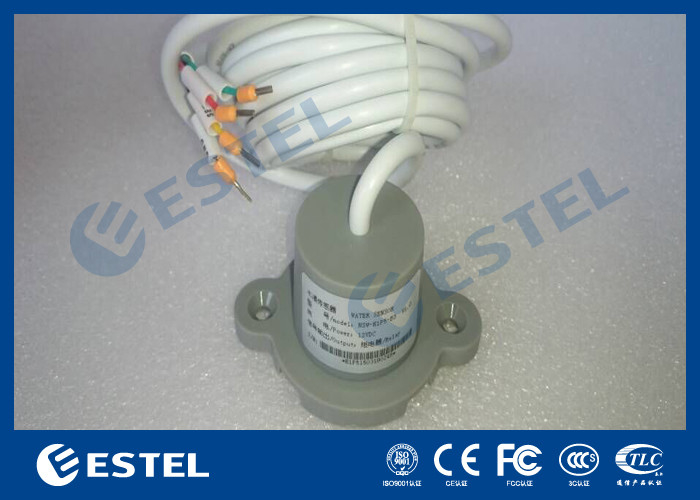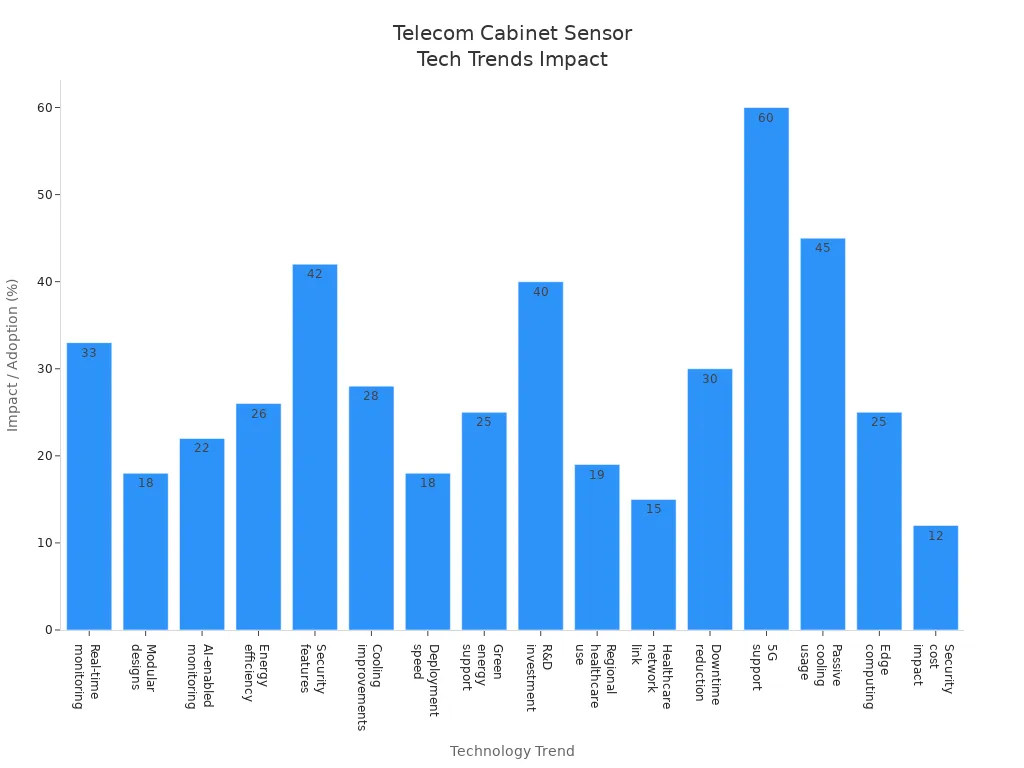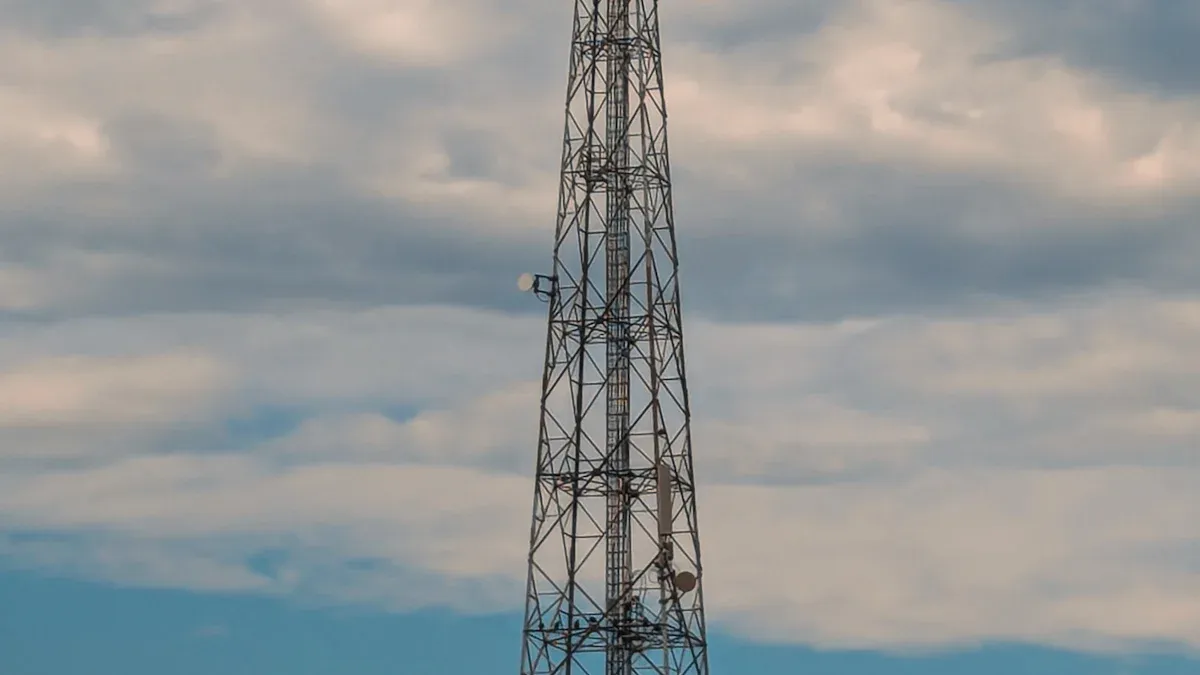ESTEL unveils the top trends in telecom cabinet sensor technology for 2025

Telecommunications infrastructure advances rapidly as new sensors in telecom cabinet technology drive performance, security, and operational efficiency. ESTEL identifies these emerging trends shaping digital infrastructure:
Modular and customizable cabinet designs increase scalability and adaptability.
Smart sensors in telecom cabinet systems enable remote diagnostics, reducing downtime.
Advanced cooling systems protect high-power equipment.
Enhanced security features safeguard sensitive telecommunications infrastructure.
Cabinets support growing IoT deployments and digital infrastructure needs.
Industry-wide innovation and investment accelerate progress.

Aspect | Quantitative Impact / Statistic | Explanation / Impact |
|---|---|---|
Real-time monitoring | >33% of manufacturers launch products with IoT sensors | Enables remote diagnostics, security alerts, and environmental tracking, enhancing performance and security. |
Modular designs | 18% of new designs feature modular expansion | Supports scalability and operational flexibility. |
AI-enabled monitoring | 22% of deployments include predictive maintenance | Reduces downtime by 30%, improves data resilience by 22%, boosting operational efficiency and reliability. |
Energy efficiency | 26% of new products use passive cooling and solar power | Reduces grid dependency by up to 30%, lowering operational costs and environmental impact. |
ESTEL leads the telecommunications market by integrating advanced innovation into its products. Their solutions support global infrastructure, offering reliable, efficient, and secure digital infrastructure for the future.
Key Takeaways
Smart sensors in telecom cabinets enable real-time monitoring and remote diagnostics, reducing downtime and improving network reliability.
Modular and energy-efficient designs support scalability, sustainability, and easier maintenance in telecom infrastructure.
AI-driven analytics predict failures and optimize power and cooling, boosting operational efficiency and lowering costs.
Advanced security features like biometric locks and intrusion detection protect critical hardware from unauthorized access.
Integration of renewable energy and intelligent power management reduces environmental impact and enhances system reliability.
Trends in Sensors in Telecom Cabinet

Environmental Monitoring
Environmental monitoring stands at the forefront of trends shaping sensors in telecom cabinet technology. Modern sensors in telecom cabinet systems track temperature, humidity, and air quality, providing real-time alerts that help prevent equipment damage. These smart enclosures support proactive strategies by enabling immediate corrective actions and integrating seamlessly with cooling systems for automatic adjustments. Wireless and flexible installation options allow deployment across diverse telecommunications infrastructure, ensuring optimal conditions for hardware and digital infrastructure.
Operators rely on these smart technologies to maintain network reliability and protect critical hardware. Environmental monitoring sensors support automation by delivering continuous data, which enables predictive maintenance and compliance with industry standards. These strategies reduce downtime and extend equipment lifespan.
Smart environmental monitoring not only prevents catastrophic failures but also drives operational efficiency and cost savings.
Scenario | Impact on Operational Reliability and Cost Savings |
|---|---|
Intelligent PDUs in telecom cabinets | |
ESTEL’s smart PDUs in data centers | 15% reduction in energy consumption, lower operational expenses |
Early detection of overheating, leaks | Prevented equipment failures, reduced downtime, extended lifespan |
Integration with management tools | Enhanced decision-making, streamlined maintenance, predictive maintenance |
Environmental sensors in telecom cabinet systems track critical parameters such as temperature, humidity, airflow, and power consumption. Maintaining these within optimal ranges prevents overheating, condensation, and power anomalies—common causes of hardware failure. For example, controlling humidity avoids corrosion and static discharge, while airflow optimization reduces hotspots and energy waste. These controls can improve uptime by up to 20% and reduce energy consumption by around 15%, directly translating into lower maintenance costs and extended equipment life.
Key strategies enabled by environmental monitoring sensors include:
Early detection of overheating, water leaks, and power anomalies to prevent costly downtime.
Predictive maintenance using sensor data to reduce unexpected failures.
Intelligent power management for optimized energy usage.
Integration with management tools for improved oversight and decision-making.
Extended hardware lifespan through ideal environmental conditions.
The integration of AI and IoT in these systems has transformed monitoring into a smart, automated process. ESTEL’s AI-driven remote monitoring software, deployed across hundreds of remote telecom sites, achieved a 30% reduction in energy use and a 25% decrease in downtime. AI-powered predictive power management anticipates issues and optimizes energy allocation, demonstrating the practical value of automation and smart enclosures in telecommunications.
Security and Access
Security and access control represent another critical area in the evolution of sensors in telecom cabinet technology. As telecommunications infrastructure expands to support edge computing and IoT, enhanced security becomes essential for protecting valuable hardware and digital infrastructure.
Modern smart enclosures use a combination of contact closure sensors, vibration sensors, and proximity sensors to monitor cabinet doors and detect tampering or unauthorized access. Intrusion detection devices combine multiple sensing technologies, including temperature, humidity, and water leak detection, into a single device for holistic monitoring. IoT-enabled platforms connect these sensors to centralized systems, enabling remote monitoring, real-time alerts, and automated responses.
Key strategies for enhanced security include:
Advanced locking mechanisms such as biometric and electronic locks, which restrict access to authorized personnel and provide audit trails.
Motion-activated security cameras that monitor activity only when movement is detected, conserving resources and enabling rapid response.
Integration of alarms with centralized monitoring systems for real-time notifications and reduced false alarms.
Regular staff training and security audits to identify vulnerabilities and ensure prompt corrective actions.
These strategies significantly reduce unauthorized access incidents, data breaches, and equipment loss. The integration of AI and automation further strengthens security by enabling predictive analytics, rapid threat detection, and centralized control across multiple sites.
Sensors in telecom cabinet systems continue to evolve to meet the demands of 5G, IoT, and edge computing. Embedded IoT sensors monitor temperature, humidity, vibration, and door access in real time, enabling instant alerts and preventing damage or unauthorized access. AI-powered systems and cloud-based condition monitoring support remote diagnostics and predictive maintenance, reducing manual inspections and downtime. Modular and scalable smart enclosures support dense cabling and quick installation of radios, antennas, batteries, and edge hardware.
Enhanced thermal management, EMI shielding, and compliance with strict regulatory standards ensure safe and reliable operation. Compact, plug-and-play edge enclosures combine power, compute, and cooling to support low-latency edge computing needs. Real-world deployments include macro site cabinets with integrated HVAC and power distribution, micro-site pole enclosures with battery backups, and edge computing units designed for local data processing.
The convergence of AI, automation, and smart technologies in sensors in telecom cabinet systems delivers robust security, operational efficiency, and adaptability for the future of telecommunications infrastructure.
Emerging Trends in Data Center Sensors
Modular and Green Solutions
Data center trends in 2025 highlight modular and green sensor solutions as a foundation for sustainable infrastructure. Operators now deploy modular sensors that support scalability and rapid adaptation to changing hardware requirements. These sensors include level, temperature, flow, oil humidity, vibration, and air humidity types. Each sensor undergoes rigorous testing to ensure reliability and prevent moisture ingress, which protects critical hardware.
Modular sensor designs simplify installation and reduce wiring complexity.
Plug-and-work and IO-Link technologies enable real-time monitoring and fast deployment.
Modular setups allow for easy calibration, probe swapping, and system expansion, supporting sustainable growth.
Daisy-chaining sensors reduces electronic waste and material consumption, aligning with sustainability goals.
Smart monitoring of cooling systems, coolant quality, and environmental parameters optimizes energy use and reduces water consumption. These strategies help operators track Power Usage Effectiveness (PUE), Water Usage Effectiveness (WUE), and Energy Reuse Factor (ERF). Oil humidity sensors detect coolant contamination early, while vibration sensors monitor hardware health to prevent failures. Modular and containerized data centers also enable right-sized deployments, avoiding energy waste from overprovisioning. These energy-efficient designs support infrastructure that adapts to evolving data center strategies.
AI-Driven Analytics
Emerging trends in data center sensors show a rapid shift toward ai-driven data centers. Operators use ai to transform predictive maintenance and network optimization. Sensors collect real-time data on power, cooling, and server hardware. Machine learning algorithms analyze this data, detect anomalies, and predict failures before they disrupt operations.
Ai-driven predictive maintenance issues alerts and automates remediation, such as failover or self-healing.
Ai models learn from historical and environmental data, optimizing maintenance schedules and improving prediction accuracy.
These strategies minimize downtime, reduce operational costs, and extend hardware lifespan.
Ai-driven data centers also use analytics to optimize network performance. Machine learning enables proactive management, anomaly detection, and automated configuration. Companies like Cisco and Google have demonstrated that ai-driven applications can reduce cooling power usage by up to 40% and achieve near-perfect uptime. These smart technologies enhance operational efficiency, support sustainability, and ensure robust infrastructure.
Data center trends for 2025 emphasize the integration of modular, energy-efficient designs and ai-driven analytics. These innovations deliver smarter, more sustainable, and resilient infrastructure, positioning ai-driven data centers at the forefront of digital transformation.
Power and Energy Management

Intelligent Power Monitoring
Telecommunications infrastructure relies on intelligent power monitoring to ensure reliable operation and cost efficiency. Operators deploy advanced power distribution units (PDUs) that use sensors in telecom cabinet systems to track energy consumption at the outlet level. These PDUs identify underperforming hardware, detect anomalies, and support remote management. Real-time monitoring enables immediate adjustments, reducing the need for on-site troubleshooting and minimizing downtime.
Key features of intelligent power monitoring include:
Integration of IoT and AI technologies for real-time data collection and predictive maintenance.
Remote management capabilities that allow operators to control power distribution from any location.
Surge protection and cybersecurity enhancements, such as encryption and multi-factor authentication, to safeguard digital infrastructure.
Modular and scalable designs that adapt to evolving infrastructure needs.
Operators have reported significant improvements in operational efficiency. For example, a data center reduced energy consumption by 15%, while a telecom company improved hardware uptime by 20% using ESTEL PDUs. AI-driven automation and machine learning optimize power allocation, support dynamic load balancing, and enable predictive maintenance. These innovations align with sustainability goals by reducing energy waste and operational costs.
Feature/Metric | Description/Benefit |
|---|---|
Real-time and historical energy insights | Enable dynamic energy adjustments and predictive maintenance, optimizing power usage and reducing waste. |
Energy savings | Up to 21% reduction in annual electricity costs demonstrated by intelligent PDUs. |
Enhanced reliability and uptime | Real-time load monitoring prevents overloads and unexpected failures, ensuring continuous operation of critical telecom equipment. |
Renewable Integration
Sustainability has become a core focus in modern telecommunications infrastructure. Operators increasingly integrate renewable energy sources, such as solar panels and wind turbines, into telecom cabinet systems. ESTEL’s high power rectifier cabinets support hybrid energy systems, ensuring stable power delivery even with fluctuating renewable inputs. These systems use advanced sensors for real-time temperature and power monitoring, protecting sensitive hardware and optimizing performance.
Hybrid setups combine renewables, batteries, and backup generators to maximize reliability and cost efficiency. Lithium-ion batteries provide reliable backup power, maintaining network connectivity during outages. Modular and scalable designs with smart DC link integration facilitate compatibility with battery energy storage systems and DC microgrids, supporting flexible infrastructure growth.
Aspect | Impact of Renewable Energy Integration in Telecom Cabinets |
|---|---|
Sustainability | Reduces carbon footprint by integrating solar PV and battery storage, promoting greener telecom operations. |
Reliability | Ensures 100% power availability through hybrid systems, maintaining uninterrupted telecom operations. |
Cost Efficiency | Optimizes capital and operational costs by proper sizing and hybrid system configuration. |
Energy Efficiency | Improves energy consumption via renewable sources and adaptive power-saving strategies. |
Environmental Impact | Minimizes environmental footprint by reducing fossil fuel dependency and greenhouse gas emissions. |
Operators benefit from reduced operational costs, enhanced sustainability, and improved reliability. These innovations support the transition to greener digital infrastructure and align with global data center strategies focused on energy efficiency and environmental responsibility.
Network Optimization and Security
Real-Time Data
Telecom operators rely on real-time data to optimize network performance and strengthen security. Sensors in telecom cabinet systems continuously track environmental factors such as temperature, humidity, and water presence. This constant monitoring helps operators detect abnormal conditions early, preventing hardware failures and minimizing downtime. By analyzing data trends, teams can identify congestion points and optimize infrastructure for better reliability.
Modern platforms like Multitel’s FIRMSuite and Atlas aggregate data from multiple sources, providing automated analytics and proactive alerts on power, cooling, and battery status. Centralized management enables teams to optimize HVAC performance, extend battery life, and plan capacity more effectively. These solutions also support compliance and risk management by integrating telemetry data and audit trails.
AI-driven applications play a crucial role in network optimization. Machine learning and digital twins allow operators to simulate network conditions, predict faults, and automate routine management tasks. Edge AI processes data near the source, enabling rapid decision-making for latency-sensitive applications. These innovations transform manual inspections into efficient, data-driven processes, improving operational safety and network uptime.
Real-time visibility empowers operators to make informed decisions, enhancing both network reliability and security.
Intrusion Detection
Security remains a top priority for telecom infrastructure. Advanced intrusion detection systems now use distributed fiber optic sensors, including Distributed Acoustic Sensing and Distributed Vibration Sensing, to monitor for unauthorized access. These systems analyze vibration signatures with AI-powered algorithms, distinguishing between human movement, vehicles, and environmental factors with high accuracy.
Multi-zone configurations allow operators to set different sensitivity levels for various cabinet sections, creating virtual trip-wire zones and graduated response areas. Integration with broader security management systems, such as video surveillance and access control, further enhances protection. These systems operate reliably in harsh environments and support long-range monitoring, ensuring robust coverage for critical hardware.
Modern intrusion detection systems incorporate digital signal processing, wireless communications, and object classification to improve threat identification. Best practices include encrypted communications, tamper detection, and regular audits. Compliance with industry standards ensures seamless integration and upgradeability. Ongoing management, including firmware updates and stress testing, maintains system effectiveness.
A comprehensive approach to security combines physical safeguards, real-time monitoring, and AI-driven automation. This strategy reduces false alarms, accelerates response times, and protects valuable hardware from both physical and cyber threats. As telecom networks evolve to support 5G and edge applications, robust security measures will remain essential for protecting digital infrastructure and ensuring operational continuity.
Industry forecasts show that telecom cabinet operations in 2025 will rely on advanced, modular, and energy-efficient designs. ESTEL’s innovations, such as corrosion-resistant materials, modular layouts, and IoT integration, address performance, security, and efficiency challenges. Telecom professionals should invest in AI, real-time monitoring, and sustainability strategies to future-proof digital infrastructure. For ongoing updates, organizations like the LoRa Alliance and Semtech offer valuable resources.
FAQ
What are the main benefits of using sensors in telecom cabinet systems?
Sensors in telecom cabinet systems provide real-time monitoring, support predictive maintenance, and enhance security. Operators gain better control over hardware and digital infrastructure. These smart technologies help reduce downtime and improve operational efficiency across telecommunications networks.
How do emerging trends in data center sensors support sustainability?
Emerging trends in data center sensors focus on energy-efficient designs and modular solutions. Operators use smart monitoring to optimize cooling and power usage. These strategies reduce environmental impact and align with global sustainability goals for digital infrastructure.
Why is enhanced security important for telecom infrastructure?
Enhanced security protects critical hardware and digital infrastructure from unauthorized access and cyber threats. Smart enclosures and advanced monitoring systems detect intrusions quickly. These solutions help maintain network reliability and support compliance with industry standards.
How does AI improve monitoring and automation in telecom cabinets?
AI-driven applications analyze real-time data from sensors in telecom cabinet systems. These tools predict failures, automate responses, and optimize maintenance schedules. Operators benefit from reduced manual inspections and improved network performance through advanced automation.
What role does IoT play in modern telecom cabinet strategies?
IoT enables remote monitoring and control of telecom cabinet hardware. Operators use IoT devices to collect data, automate processes, and support edge deployments. This innovation drives smarter infrastructure and supports evolving data center strategies.
See Also
Latest Innovations Shaping Outdoor Telecom Cabinet Designs
The Importance Of Upgrading Telecom Cabinets By 2025
New Developments In Designing Outdoor Communication Cabinets
CALL US DIRECTLY
86-13752765943
3A-8, SHUIWAN 1979 SQUARE (PHASE II), NO.111, TAIZI ROAD,SHUIWAN COMMUNITY, ZHAOSHANG STREET, NANSHAN DISTRICT, SHENZHEN, GUANGDONG, CHINA


